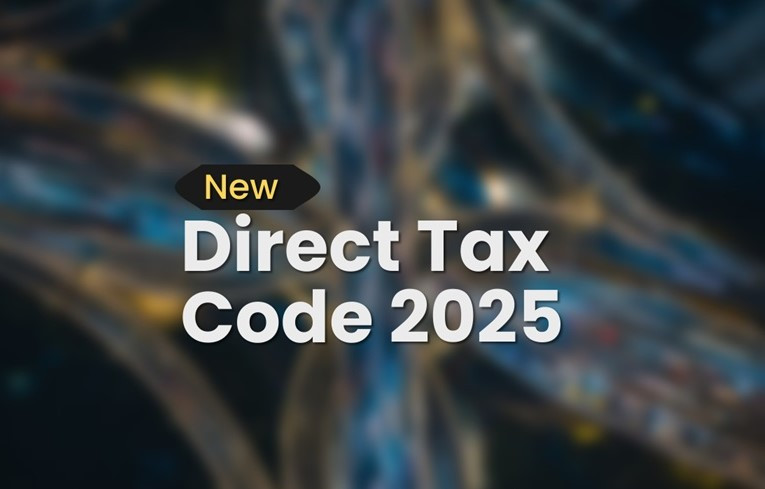Key Insights into Direct Tax Code 2025: A Taxpayer's Guide
India is set to introduce the Direct Tax Code 2025 (DTC 2025), which will replace the Income Tax Act of 1961. This significant overhaul, effective from April 2025, aims to modernize and simplify the tax system. The Direct Tax Code 2025 seeks to address long-standing issues such as complex tax provisions and low compliance rates, while also expanding the tax base and enhancing transparency.
Why Was the Direct Tax Code 2025 Introduced?
The Direct Tax Code 2025 is the government's response to the complexity and inefficiency of the current tax system. India's existing tax laws are often seen as difficult to navigate, which results in poor taxpayer compliance. With the aim of simplifying this framework, the government hopes that the new code will encourage more people and businesses to comply with tax laws. Initially proposed in 2009, the code faced numerous delays but is now set to take effect from April 2025.
A primary goal of the Direct Tax Code 2025 is to expand the country's tax base, which currently includes only around 1% of the population. The code aims to increase this coverage to 7.5%, thereby improving revenue generation and ensuring broader compliance. Additionally, the new framework will make the tax filing process more straightforward, reducing disputes and simplifying tax-related procedures for both individuals and businesses.
Major Reforms Under the Direct Tax Code 2025
The Direct Tax Code 2025 introduces several key changes that will streamline and simplify the existing system. These reforms will not only make tax filing easier but will also help improve compliance and transparency.
Simplified Residential Status Classification
The Direct Tax Code 2025 introduces a simplified residential status classification. Under the new code, individuals will only be categorized as residents or non-residents, eliminating the confusing “Resident but Not Ordinarily Resident” (RNOR) classification.
Abolition of Assessment Year and Previous Year
Another notable reform is the removal of the terms “Assessment Year” (AY) and “Previous Year” (PY). Taxpayers will now focus solely on the Financial Year (FY), making the entire tax filing process much more intuitive and less cumbersome.
Capital Gains Tax Revisions
Under the Direct Tax Code 2025, capital gains will be treated as regular income, subjecting them to higher tax rates that are similar to other forms of income. This change is expected to impact individuals who earn income through capital gains, aligning tax treatment across various income streams.
Updated Income Definitions
The Direct Tax Code 2025 also revises income categories to create greater clarity. For instance, "Income from Salary" will now be referred to as "Employment Income," while "Income from Other Sources" will be rebranded as "Income from Residuary Sources."
Unified Tax Rate for Companies
A key reform in the Direct Tax Code 2025 is the introduction of a unified tax rate for both domestic and foreign companies. This measure aims to create a more transparent tax environment, especially for multinational businesses operating in India.
Removal of Exemptions and Deductions
To reduce tax avoidance and make the tax filing process simpler, the DTC 2025 removes many exemptions and deductions. This change is designed to promote fairness and ensure that tax filings are more transparent.
Expanded Applicability of TDS and TCS
The scope of Tax Deducted at Source (TDS) and Tax Collected at Source (TCS) will be extended to cover a wider range of income categories. This will improve tax collection efficiency and reduce the potential for tax evasion.
Streamlined Tax Structure
The Direct Tax Code 2025 significantly simplifies the tax structure by reducing the number of sections from 298 to 319 and introducing 22 new schedules. This will make the tax system easier to understand and manage for both individuals and businesses.
Impact on Professionals and Businesses
For professionals such as Chartered Accountants (CAs), Company Secretaries (CS), and Cost Management Accountants (CMAs), the Direct Tax Code 2025 will come into effect from April 2026. However, those preparing for exams before March 2026 will still need to follow the existing Income Tax Act.
For businesses, the unification of tax rates and the simplification of procedures under the DTC 2025 will make the tax system more transparent and efficient. These changes will help streamline tax filings and audits, ensuring a smoother process for companies.
Conclusion
The Direct Tax Code 2025 represents a significant step forward in simplifying India's tax system. By addressing complex regulations, reducing disputes, and broadening the tax base, it aims to create a more efficient and transparent tax environment. As the country prepares for this major shift, both individuals and businesses must stay informed to ensure a smooth transition into the new tax regime.

